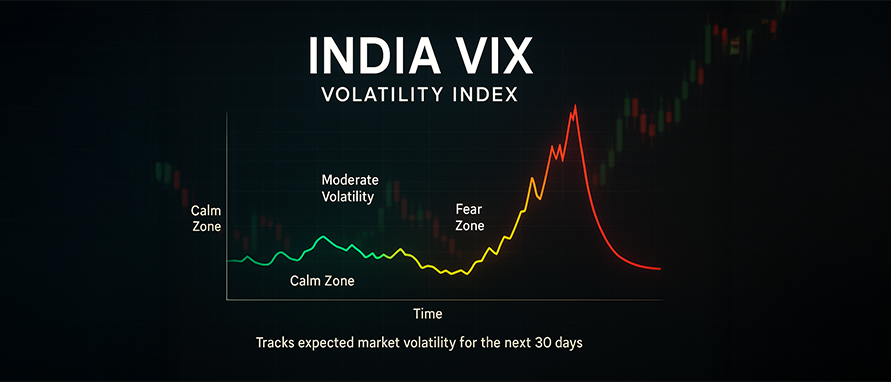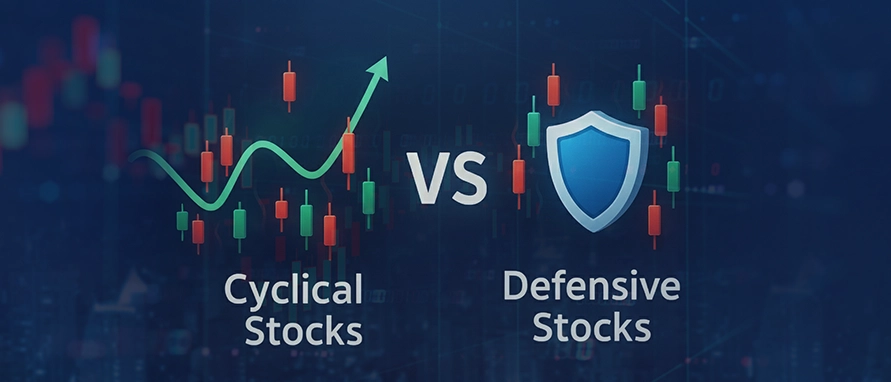-
Our ProductsLoansCardsInsuranceInvestmentsStock MarketElectronics MallCIBIL ScoreKnowledge CentreAcademyCalculators
- Our Services
- My Account
- Discover
What Is a Sweep Account – Advantages and Limitations
Sweep accounts automatically transfer surplus funds from a primary account into a higher‑interest vehicle or market fund. This page explores how they function, the benefits and limitations they offer, and what investors should understand when choosing to use them.
How Sweep Accounts Work
Sweep accounts operate by automating the movement of surplus funds to maximise earning potential without compromising liquidity. Their logic lies in ensuring that idle balances in primary accounts are not left unutilised but redirected into interest-generating instruments.
Mechanics of Cash Transfer
At the end of each banking day, any surplus funds above a specified limit are automatically ‘swept’ into a secondary investment-linked account. Common sweep targets include money market funds, fixed deposits, or other low-risk instruments. These funds remain accessible and can be brought back into the primary account as needed.
Threshold Levels and Automatic Movement
Users or businesses define a lower threshold to maintain daily transaction capability in the main account. If the account exceeds this limit, the system initiates an automatic transfer of the surplus to the linked instrument. Conversely, if the main account dips below the threshold, funds are swept back in to replenish it. This ensures liquidity while earning returns on otherwise idle cash.
Advantages of Using Sweep Accounts
Sweep accounts offer a practical solution for making cash reserves more efficient, especially in fluctuating income or business cycles:
Efficient Use of Idle Funds
Rather than leaving excess money stagnant in a savings or current account, a sweep account ensures those funds are earning potential returns, typically higher than standard bank interest rates.
Interest Enhancement
The linked instruments, such as fixed deposits or liquid mutual funds, usually offer better interest rates than regular savings accounts. This incremental income can be meaningful over time, especially for high-balance accounts.
Maintained Liquidity
Even though funds are swept into investment vehicles, they can be recalled automatically to meet account requirements. This setup allows users to meet urgent or unplanned expenses without the need for premature withdrawal penalties.
Simplified Cash Management
With automatic balancing between the primary and linked account, users do not need to manually monitor and move funds. This saves time and helps maintain optimal account levels with minimal intervention.
Customisability
Many financial institutions offer flexibility in sweep configurations—allowing users to set custom thresholds or choose the type of investment vehicle—making it adaptable to individual needs or risk appetites.
Limitations of Sweep Accounts
Despite their convenience, sweep accounts come with certain limitations that may impact overall effectiveness or suitability:
Variable Interest and Market Risk
Returns are not guaranteed. Money market funds and other short-term instruments used for sweeps are subject to interest rate fluctuations and, in some cases, credit or liquidity risks.
Transfer Timing and Delays
Sweeps typically execute post-business hours or at end-of-day processing. This means immediate fund needs or rapidly changing account balances may not trigger a sweep in real-time, potentially affecting liquidity.
Minimum Balance Requirements
Some banks mandate a minimum surplus before initiating a sweep. If balances regularly fall below this threshold, the feature may not activate, and idle funds remain unutilised.
Costs and Fees
Banks may impose fees for setting up and maintaining sweep arrangements. There could also be penalties for premature withdrawal of funds from fixed deposits or charges on liquid fund redemptions, which may erode the incremental yield.
Regulatory and Tax Impacts
Income from sweep-linked instruments may be taxable. Taxation depends on the investment product and the investor’s income bracket. Furthermore, regulatory norms may change, affecting product features or permissible instruments.
Difference between Personal Sweep and Business Sweep
A Personal Sweep Account is primarily used by individual account holders to automatically transfer excess funds from a savings account into a fixed deposit or higher-interest account to maximize returns, while retaining liquidity. In contrast, a Business Sweep Account is tailored for companies and organizations, where idle funds from operational accounts (like current accounts) are automatically moved into short-term investments or interest-earning accounts to enhance cash flow efficiency and earn better returns without compromising daily liquidity needs. While both aim to optimize idle cash, personal sweeps focus on individual savings, whereas business sweeps are designed to support corporate cash management.
Types of Sweep Accounts
Explore common configurations based on asset type:
Money Market Sweep
Surpluses move into money market funds, offering liquidity and variable returns.
Fixed Deposit Sweep
Funds are placed in fixed‑duration deposits, generally with better interest but less liquidity.
Custom Sweep Structures
Some platforms allow custom sweeps into accepted mutual funds or other instruments, offering flexibility for investors.
Who Should Consider a Sweep Account
Learn about the target users for these accounts and their typical expectations:
Conservative Investors Seeking Yield
Those with low-risk tolerance who want better returns without manual fund management may benefit most from sweep accounts.
Salaried Individuals with Regular Cash Flows
Regular inflow–outflow cycles from salaries or business earnings can be neatly managed using thresholds in sweep accounts.
Conclusion
Sweep accounts offer a convenient way to manage surplus cash with automatic transfers, potentially improving earnings while maintaining access. However, investors must understand variable returns, costs and liquidity conditions when opting for these accounts.
Disclaimer
This content is for informational purposes only and the same should not be construed as investment advice. Bajaj Finserv Direct Limited shall not be liable or responsible for any investment decision that you may take based on this content.
FAQs
What does a sweep transfer mean?
A sweep transfer refers to the automatic movement of surplus cash from a primary bank account into a linked investment vehicle or deposit account at the end of day.
Are sweep deposit accounts safe?
Sweep deposit accounts are generally safe but carry risk depending on the investment vehicle used; money market funds tend to be low risk but not risk‑free.
What are disadvantages of auto sweep accounts?
Disadvantages include variable returns, potential fees, minimum thresholds, transfer delays and tax implications that reduce net benefit.
Can I interrupt a sweep if funds are needed?
Yes, funds can usually be accessed within business days after unwinding a sweep, but timing may vary based on provider and instrument type.
Anshika brings 7+ years of experience in stock market operations, project management, and investment banking processes. She has led cross-functional initiatives and managed the delivery of digital investment portals. Backed by industry certifications, she holds a strong foundation in financial operations. With deep expertise in capital markets, she connects strategy with execution, ensuring compliance to deliver impact.
Related Blogs

Geetanjali Lachke

Roshani Ballal

Geetanjali Lachke

Roshani Ballal

Roshani Ballal

Geetanjali Lachke

Geetanjali Lachke

Nupur Wankhede

Anshika

Nupur Wankhede

Nupur Wankhede

Nupur Wankhede

Nupur Wankhede

Nupur Wankhede

Nupur Wankhede

Nupur Wankhede

Geetanjali Lachke

Geetanjali Lachke

Roshani Ballal

Nupur Wankhede

Anshika

Anshika

Nupur Wankhede

Nupur Wankhede

Nupur Wankhede

Nupur Wankhede

Nupur Wankhede

Nupur Wankhede

Nupur Wankhede

Nupur Wankhede

Nupur Wankhede

Nupur Wankhede

Nupur Wankhede

Nupur Wankhede

Roshani Ballal

Anshika

Nupur Wankhede

Geetanjali Lachke

Roshani Ballal

Nupur Wankhede

Nupur Wankhede

Anshika

Anshika

Nupur Wankhede

Anshika

Anshika

Nupur Wankhede
.webp)
Nupur Wankhede

Nupur Wankhede

Nupur Wankhede

Nupur Wankhede

Nupur Wankhede

Nupur Wankhede

Nupur Wankhede
.webp)
Nupur Wankhede

Nupur Wankhede

Nupur Wankhede

Nupur Wankhede
-in-India.webp)
Nupur Wankhede

Nupur Wankhede

Nupur Wankhede

Anshika

Nupur Wankhede

Nupur Wankhede

Anshika

Anshika

Nupur Wankhede

Nupur Wankhede

Nupur Wankhede

Nupur Wankhede

Nupur Wankhede

Nupur Wankhede

Nupur Wankhede

Nupur Wankhede

Nupur Wankhede

Nupur Wankhede

Anshika

Nupur Wankhede

Nupur Wankhede

Nupur Wankhede

Nupur Wankhede

Anshika

Nupur Wankhede

Nupur Wankhede
-Meaning-Importance.webp)
Nupur Wankhede

Anshika

Nupur Wankhede

Nupur Wankhede

Nupur Wankhede

Anshika

Nupur Wankhede

Nupur Wankhede

Nupur Wankhede

Geetanjali Lachke

Geetanjali Lachke

Geetanjali Lachke

Anshika

Anshika

Nupur Wankhede

Nupur Wankhede
-portfolio.webp)
Nupur Wankhede

Anshika

Roshani Ballal

Geetanjali Lachke

Geetanjali Lachke

Geetanjali Lachke

Geetanjali Lachke

Geetanjali Lachke

Roshani Ballal

Roshani Ballal

Geetanjali Lachke

Geetanjali Lachke

Geetanjali Lachke

Roshani Ballal

Roshani Ballal

Geetanjali Lachke

Roshani Ballal

Roshani Ballal

Roshani Ballal

Roshani Ballal

Roshani Ballal

Roshani Ballal

Roshani Ballal

Roshani Ballal

Roshani Ballal





















































.webp)



.webp)











.webp)




.webp)



































